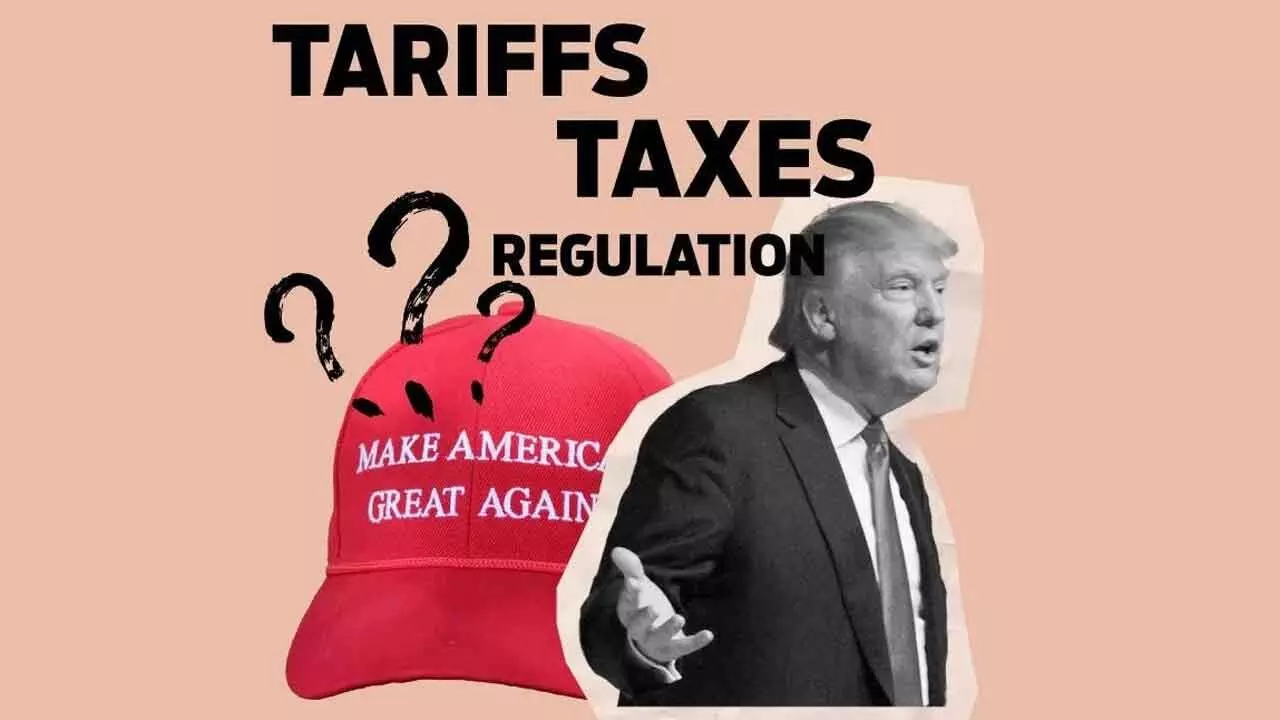Time To Keep Fingers Crossed If Trump Sticks To Tariff-Only Tax Plan
Historical data from various government sources show the growing gap between tariff revenue and federal income requirements
Time To Keep Fingers Crossed If Trump Sticks To Tariff-Only Tax Plan

Despite the image of tax-free living that eliminates income tax conjures, when contemplating this change, one should ponder at wider and graver consequences for the economy
During his campaign activities, Donald Trump put into practice a tax reform proposal that includes a daring and ambitious America: eliminating income tax and go with just tariffs to generate tax revenue. This solution, which draws inspiration from America around the period before the 16th Amendment, is going back in time when the government was financed by only tariffs. Economists, politicians and all nations, which export to the USA, are debating on whether a model of the 1800s could be implemented successfully without causing real problems in the era of digitalization and globalization.
To get the answer about the practicability of the proposal, we have carefully examined data from the Congressional Budget Office, Treasury Department, and Bureau of Economic Analysis. A comprehensive analysis of two decades of federal revenue data reveals the stark reality of Trump's proposal. First and foremost, the historical data demonstrates the growing gap between tariff revenue and federal income requirements.
The analysis of federal revenue data reveals several key trends that underscore the challenges of relying solely on tariffs to fund the government. First, there is a growing revenue gap: federal revenue requirements have surged from $1.78 trillion in 2003 to $4.89 trillion in 2022, yet tariff revenue has only grown modestly, from $19.9 billion to $93.8 billion over the same period. The increase in tariff requirements would be dramatic. To replace just the (estimated) individual income tax in 2024, tariffs would need to jump from the current rate of 3.10 per cent to approximately 80.56%—a massive 26-fold increase.
Historical data indicates that even slight increases in tariff rates tend to decrease import volumes, suggesting that extremely high rates could significantly reduce the trade they are meant to tax. Tariff revenue has proven to be volatile, particularly during economic downturns, with notable drops in 2009 and 2020. This volatility raises concerns about tariffs as a stable revenue source, as they may be unreliable for funding essential government services in times of economic hardship.
Federal revenue data from 2003 to 2024 reveals that substantial blows will be inflicted if Trump relies entirely on tariffs as federal revenue. In 2022, the total federal revenues reached the amount of $4.89 trillion, with individual income tax participation of $2.32 trillion. Meanwhile, duties are bringing in only $93.8 billion at a 3.11 per cent on average. In order to pay the same money as income tax, those tariffs will have to grow to 77.16 per cent, and the total federal revenue will be at an unfeasible rate of 162.24 per cent. Such useful high tariff rates make a transport vehicle, the price of which is $35,000, to swell to $62,006; thus, prices of hardware, laptops, and home appliances will follow the uptrend too. The retail, manufacturing, and technology firms, which are mainly dependent on imported commodities, complain of job cuts in the millions, supply chain breakdowns, and loss of competitiveness in the future leading to economic instability.
History, as well as international data, shows similar things that were done that caused unresolved issues. Brazil, Argentina and Mexico had falls in trade volumes, GDP, and foreign investment due to high-tariff policies. Although tariffs in the U.S. over the past 20 years grew federally by 371 per cent, from a relatively small base, the inflation of the import tariffs has been sensitive to the rate of tariffs.
Some well-known scholars like Dr. James Chen, argue or caution that tariffs alone cover federal program funding (like social security, medicare, national defence) and potentially isolate the U.S. economy from the world market. Moreover, this kind of protectionist strategy could also lessen the affordability of goods and the sustainability of specific sectors, at the same time instigating the setting up of countertrade barriers, thus causing a decrease in imports and a weakened economic basis. To sum up, despite the image of tax-free living that eliminates income tax conjures, when contemplating this change, one should ponder at wider and graver consequences for the economy.
The data reveals that to replace income tax with tariffs, the government would need to hike the current 3.1 per cent tariffs to 162 per cent to cover the federal revenue targets. This would lead to a large cost increase for imported goods, with a possible spread of negative effects throughout the economy. Economic historians and policy analysts point to similar high-tariff policies in other countries that led to a decrease in trade volumes and recession. Historical tariff revenue fluctuations during recessions, as well as the complicated nature of modern international trade, would thus meet serious structural barriers to implementation. As tax reform discussions continue, the figures indicate that a complete shift back to a tariff-based system would mean the fundamental reorganization of not only federal funding but also international trade relationships.
The historical data and economic analysis suggest that redesigning income tax as a tariff would necessitate such severe rates that it would be a fundamental change to the economy, and lifestyle of American citizens.
The proposal's implementation would be most likely to be the source of more problems than solutions, especially in the field of domestic markets as well as international trade relationships.
(Dr. Siddharth Gavhale is an Assistant Professor at DY Patil International University, Akurdi, Pune; Sushmita Kumari is a Doctoral Scholar at Vinoba Bhave University, Jharkhand)

